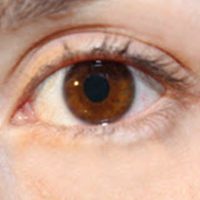Common Car Accident Eye Injuries

When people think of the kinds of injuries sustained in car accidents, the first that come to mind are usually broken bones, lacerations, and head injuries. What many are unaware of, however, is that auto accidents are actually one of the leading causes of trauma-related eye injuries. These injuries include everything from cuts and fractured eye sockets to burns caused by the releasing of certain chemicals when airbags are deployed. Some eye injuries heal relatively quickly, while others can result in permanent damage even after treatment.
What Kinds of Eye Injuries Can Car Accident Victims Sustain?
The eyes can be injured in a lot of different ways in a car accident. The most common injuries include:
- Bruising from blunt force impact to the eye or the tissue surrounding it, which is also often accompanied by swelling and pain, making it difficult to see;
- Bleeding, also known as eye surface hemorrhage, which is another common result of trauma to the eye;
- Irritation and chemicals burns from the fumes, irritants, and chemicals that escape when airbags deploy;
- Corneal abrasions, which occur when the transparent area on the front of the eye is scratched and can cause pain, watering, and sensitivity to light;
- Lacerations and other injuries from a foreign object, which occur when something actually cuts or becomes lodged in the eye (like dirt, debris, or shattered glass);
- Eye socket fractures, which can occur when someone suffers blunt force trauma to the bones around the eye; and
- Retinal detachment, which occurs when the thin tissue on the back of the eye (the retina) pulls away from the wall of the eye, usually because of blunt force impact.
The types of treatment that an accident victim requires will depend on the type and severity of the injury. Eye socket fractures, for instance, often need surgical repair, as does retinal detachment. Abrasions and irritation from chemicals, on the other hand, may heal over time, with the aid of specific medications.
Eye Injury Symptoms
The symptoms of an eye injury will vary based on the type of injury. Some are sudden and occur immediately, while others may develop over time, but most involve some sort of:
- Swelling on the eyelid or near the eye area;
- Pain and sensitivity, especially to the touch or when attempting to open, close, or move the eye;
- Bruising and redness near the eye or in the eye itself;
- Changes in vision, including floating black spots, flashes of light, blurry vision, double vision, or vision loss;
- Difficulty moving the eyes, or the movement of one eye independently of the other;
- Changes in eye appearance, with pupils of different sizes, or protrusion from the eye socket; and
- Bleeding in or near the eye.
Diagnosing eye injuries after an accident can be challenging, as the symptoms of many different types of injuries are similar. Eye injuries can also go unnoticed in the aftermath of an accident, especially when a person is also suffering from other injuries, making it especially important for accident victims to seek medical attention after a crash.
Contact a Florida Car Accident Lawyer
Losing your sight can impact your ability to work and enjoy life. For help seeking compensation for your own accident-related eye injury, call 954-566-9919 and set up a meeting with one of the dedicated Fort Lauderdale car accident attorneys at Boone & Davis today.
Sources:
ncbi.nlm.nih.gov/pmc/articles/PMC3037036/
ncbi.nlm.nih.gov/pmc/articles/PMC504099/
